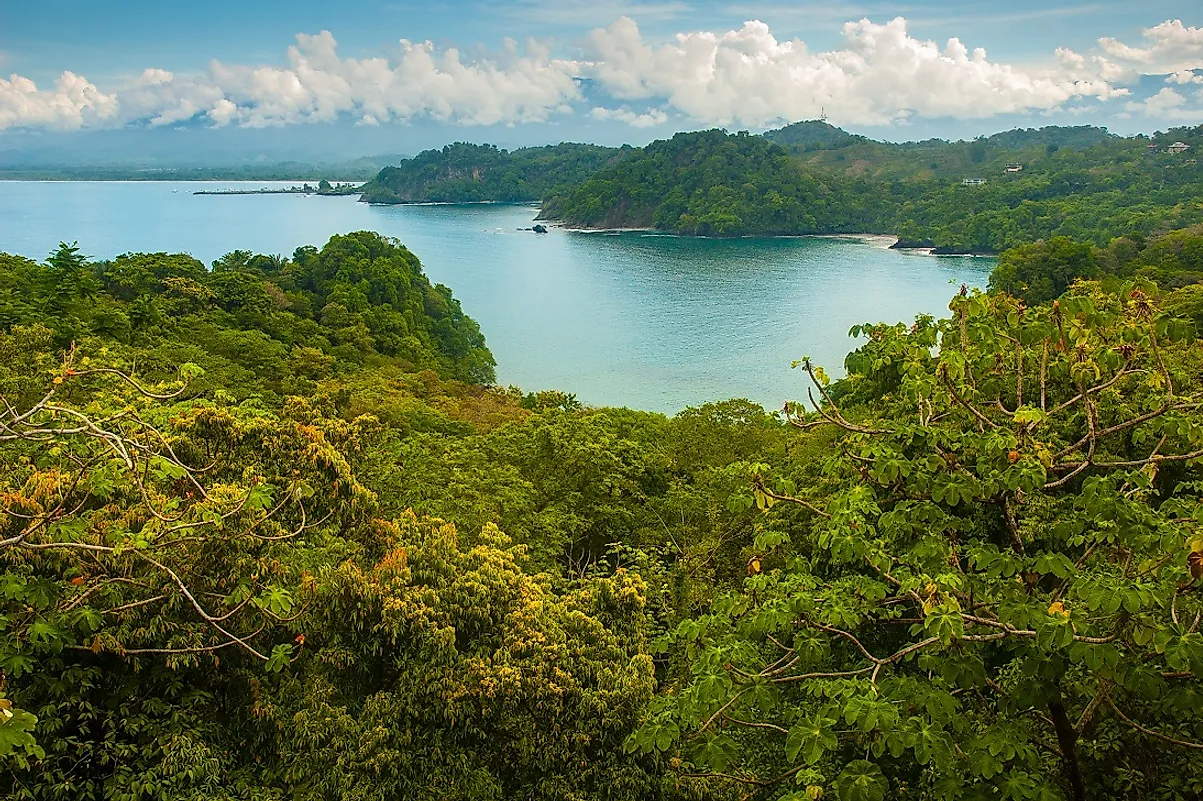Parque Nacional Manuel Antonio, Costa Rica - Unique Places Around the World

5. Description
Listed by Forbes Magazine as among the dozen most beautiful national parks in the world, the 1,983-hectare Manuel Antonio National Park, named after a Spanish Conquistador, can be found on the Pacific Coast of Costa Rica. It was opened to the public in 1972 and is 82 miles away from the Costa Rican capital city of San José. People who adore the tropical weather and enjoy basking under the heat of the sun will simply love visiting the Manual Antonio National Park, also known as Parque Nacional Manuel Antonio among the locals. Dry season is from January to March, while rainy season is from April to December. If you’re a big fan of the beach and some magnificent coastal scenery, then you’d be better off adding this small, yet gorgeous, park to your list of must-see attractions should you find yourself in Costa Rica.
4. Tourism
Approximately 150,000 guests enjoy the picturesque beaches, coral reefs, and hiking trails of Manuel Antonio National Park each and every year. It is easily accessible by car from the capital city of San José, with the drive taking about three to four hours. Another alternative is via the Quepos to Manual Antonio route. From there, one can come to Manuel Antonio onboard one of the buses leaving the airport, which depart from there toward the park every half hour all throughout the day.
3. Uniqueness
Despite being tagged as the smallest national park in Costa Rica, there isn’t any shortage of breathtaking attractions and exciting outdoor activities that guests can enjoy partaking while at Manuel Antonio National Park. The place is the perfect spot for enjoying a bit of hiking on its well-tended trails, which are easy enough for beginners to finish a trek upon within a day's time. Breathtaking beaches aside, the park also offers various educational programs and even a vanilla spice tour, which will surely appeal to school-aged children or any visitors who are keen on learning more about the place and its unique natural resources. Other activities hugely popular in and around Manuel Antonio National Park are mountain climbing, horseback riding, kayaking, windsurfing, whale watching, deep-sea fishing, scuba diving, whitewater rafting, and snorkeling.
2. Habitat
Manuel Antonio National Park is host to a large number of exotic plants and animals, including those that thrive in its densely canopied rain forests. Among the mammals who call the park their home are mantled howler monkeys, red-back squirrel monkeys, several rare spiders, and white-faced capuchins. Raccoons, pizotes, three-toed sloths, and agoutis also abound in the region, alongside a generous smattering of brown pelicans, kingfishers, red-capped manakins, fiery-billed aracaris, emerald toucanets, and chestnut-mandibled toucans. Closer to the shore, one can expect to see iguanas, while in the forests prepare for sightings of ocelots, squirrel monkeys, basilisks, red-eyed leaf frogs, leaf-litter (ocelot) geckos, and big-headed anoles.
1. Threats
Despite the huge popularity of Manuel Antonio National Park, it is still inundated by significant threats, especially those concerning the conservation of its bountiful natural resources. Other issues troubling this world famous attraction include deforestation, shark finning, and poaching, as well as the hunting and selling of the highly coveted Leatherback sea turtles and their eggs. Implementation of regulations meant to stop these aforementioned activities is being greatly impeded by corruption, and the presence of Mexican drug cartels in this part of Costa Rica.











